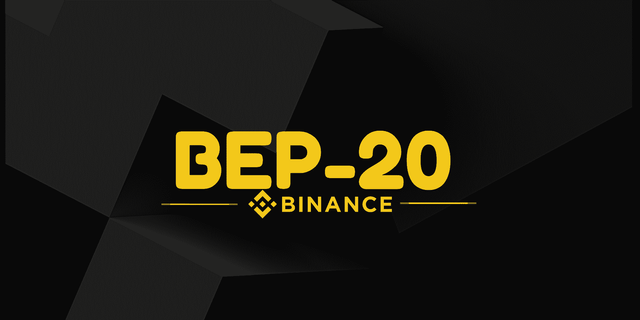Mastering BEP-20 Token Development: A Comprehensive Guide

In the rapidly evolving world of cryptocurrencies and blockchain technology, BEP-20 tokens have emerged as a popular standard for creating and managing tokens on the Binance Smart Chain (BSC). BEP-20 tokens offer a range of advantages, from low transaction fees to fast processing times, making them a preferred choice for many projects. In this comprehensive guide, we’ll explore what BEP-20 tokens are, how to develop them, and best practices for successful implementation.
What is BEP-20?
BEP-20 is a token standard on the Binance Smart Chain (BSC) that extends the ERC-20 token standard used on Ethereum. It defines a common set of rules for how tokens should be issued, transferred, and managed on the BSC. The BEP-20 standard ensures interoperability and compatibility between tokens and decentralized applications (dApps) on the Binance Smart Chain.
Why Choose BEP-20 Tokens?
Low Transaction Fees: One of the biggest advantages of BEP-20 tokens is the significantly lower transaction fees compared to Ethereum-based tokens. This cost-effectiveness makes BSC a more attractive option for both developers and users.
Fast Transaction Speeds: Binance Smart Chain offers faster block times and quicker transaction confirmations, leading to a more seamless user experience.
Compatibility: BEP-20 tokens can interact with various DeFi protocols, dApps, and services on the Binance Smart Chain, making them versatile for a range of use cases.
Strong Ecosystem: BSC’s growing ecosystem includes various tools, platforms, and communities that support BEP-20 tokens, providing ample resources for developers.
Getting Started with BEP-20 Token Development
1. Set Up Your Development Environment
Before you start, ensure you have the necessary tools and environment set up:
- Node.js and npm: These are essential for managing packages and running scripts.
- Truffle Suite or Hardhat: Popular frameworks for Ethereum-compatible smart contract development.
- Binance Smart Chain Node: You can use the BSC testnet for development and testing before deploying to the mainnet.
2. Understand BEP-20 Token Functions
Familiarize yourself with the core functions and events of the BEP-20 standard. These include:
- transfer(address to, uint256 amount): Transfers tokens from the caller’s account to another address.
- approve(address spender, uint256 amount): Allows a spender to withdraw tokens from the caller’s account multiple times.
- transferFrom(address from, address to, uint256 amount): Transfers tokens from one address to another, usually used in conjunction with
approve. - balanceOf(address account): Returns the token balance of a specific address.
- totalSupply(): Returns the total supply of tokens.
3. Write Your BEP-20 Token Contract
Using a smart contract programming language like Solidity, you can create your BEP-20 token. Here’s a simple example of a BEP-20 token contract:
solidity
Copy code
`// SPDX-License-Identifier: MIT
pragma solidity ^0.8.0;
import "@openzeppelin/contracts/token/ERC20/ERC20.sol";
contract MyBEP20Token is ERC20 {
constructor(uint256 initialSupply) ERC20("MyToken", "MTK") {
_mint(msg.sender, initialSupply);
}
}`
This example uses OpenZeppelin’s ERC20 implementation, which provides a secure and standard base for token development. You can customize this contract with additional features or functionalities as needed.
4. Test Your Token
Testing is crucial to ensure your token behaves as expected. Deploy your contract to the BSC testnet using Truffle or Hardhat, and interact with it using tools like Remix or MyEtherWallet.
5. Deploy to the Binance Smart Chain Mainnet
Once you’re satisfied with your testing, you can deploy your token to the BSC mainnet. Make sure you have enough BNB to cover deployment fees.
6. Verify and Publish Your Contract
After deployment, verify and publish your contract’s source code on BSCScan. This enhances transparency and allows users to interact with your token more easily.
Best Practices for BEP-20 Token Development
Security: Ensure your smart contract is secure by following best practices and conducting thorough audits. Use established libraries and frameworks to minimize vulnerabilities.
Scalability: Design your token with scalability in mind. Consider how it will interact with other protocols and services, and plan for future upgrades or expansions.
Compliance: Be aware of regulatory requirements and ensure your token complies with relevant laws and regulations.
Community Engagement: Engage with the Binance Smart Chain community to gain support and feedback. Building a strong community around your token can contribute to its success.
Documentation: Provide clear and comprehensive documentation for your token, including its purpose, functionalities, and usage instructions. This helps users and developers understand and interact with your token effectively.
Conclusion
Developing BEP-20 tokens on the Binance Smart Chain offers a range of benefits, including low transaction fees, fast speeds, and strong ecosystem support. By following the steps outlined in this guide and adhering to best practices, you can create a robust and successful BEP-20 token that meets your project’s needs and contributes to the growing BSC ecosystem.
As the blockchain space continues to evolve, staying informed about new developments and continuously improving your skills will help you master BEP-20 token development and leverage its full potential.